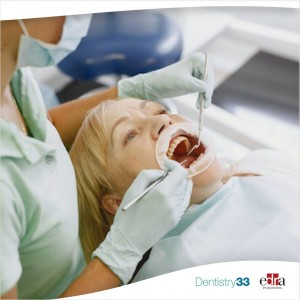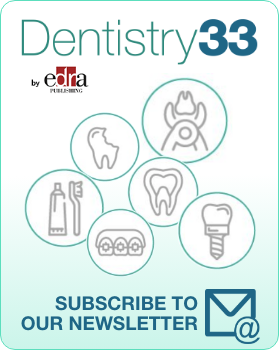
The One Health initiative and its importance to oral health
A team led by Dr. Bruce Dye, School of Dental Medicine at the University of Colorado Anschutz Medical Campus, published an editorial on the importance of One Health concepts in the March 2023 issue of the Journal of the American Dental Association.
As background, the authors explained that the Centers for Disease Control and Prevention defines One Health as a “collaborative, multisectoral, and transdisciplinary approach — working at the local, regional, national, and global levels — with the goal of achieving optimal health outcomes recognizing the interconnection between people, animals, plants, and their shared environment.”
Using an ecosystems approach, the One Health strategy aims to address several global health challenges by improving human health, animal health, and environmental health, with an important aim of preventing or reducing the adverse effects of future epidemics and pandemics. Because of this shared connection between humans, animals, and the environment, protecting one domain helps protect all three domains.
In the spring of 2022, the World Health Organization, Food and Agriculture Organization of the United Nations, World Organization for Animal Health, and United Nations Environment Program signed an agreement to strengthen transdisciplinary collaboration, research and information dissemination, elevating One Health to global importance.
On October 17, 2022, these same international organizations announced the development of a new One Health Joint Plan of Action to create a framework that will begin to unite systems and resources to collectively better respond to health threats.
Illnesses caused by harmful microorganisms such as viruses, bacteria, and parasites that spread from animals to humans are known as zoonotic diseases. These diseases can inflict illness on people that range from mild to severe and may even lead to death. The CDC estimates that animals are responsible for more than 60% of the known communicable diseases affecting humans. More worrisome is that three of four new or emerging infectious diseases originate from animals.
Globally, increasing population densities, contact with animals, global travel and trade, and climate changes have increased opportunities for zoonotic diseases to flourish. Consequently, we live in a world in which zoonotic diseases are not only common but spread more efficiently.
A perspective article from the National Academy of Sciences has outlined the influence of biodiversity on human health and how a loss of biodiversity affects zoonotic pathogens. Essentially, less variety of living organisms in our ecosystem allows more putative species that cause human illness to thrive.
As oral health care professionals, this should resonate with us as this is also the case with disruptions in the oral microbiome. When the composition of the oral microbial community shifts to favor fewer microbial species or clusters of more dominant species, some of which are pathogenic, this creates a dysbiosis. Oral microbiome dysbiosis is associated not only with caries and periodontitis but also with obesity and cardiovascular disease. Factors adversely affecting biodiversity, ecology, and the environment that influence the transmissibility and severity of zoonotic diseases are an important concern.
Zoonotic illnesses can affect us in several different ways, including economic impacts, lost opportunities and potential morbidity and death. These illnesses also can affect public health by increasing the likelihood of antibiotic resistance to develop as well as by decreasing food safety and security. In the U.S., we often experience zoonosis that affects people. Indirectly, influenza A subtype H5N1 (avian influenza) has zoonotic potential, is highly pathogenic, and can have a major impact on our food supply when large commercial flocks of poultry are affected.
Other zoonotic diseases that directly cause illness in humans include salmonella, West Nile virus, Lyme disease, brucellosis, hantavirus and rabies. Other infectious diseases hypothesized, but not confirmed, to have zoonotic origins are HIV and AIDS (simian immunodeficiency virus) and COVID-19. In 2022, mpox (formerly known as monkeypox) emerged as a public health emergency. This outbreak is an example of how the epidemiology of a known infectious disease can change as the zoonotic pathogen adapts to a changing environment.
Although a rudimentary understanding of animal-to-human disease transmission can be traced back to the late 19th century when the German pathologist Rudolph Wirchow coined the term zoonosis, multidisciplinary efforts initiated years later have begun to appreciably reshape our thinking about zoonotic disease transmission, disease prevention, and health promotion. What began as a concept known as One Medicine focused on a medical-veterinary approach has evolved into One Health, focusing on the interrelationships between people, animals, and plants within our shared environment. Originating from the One World, One Health conference in New York, New York in 2004 and continuing 15 years later in Berlin, pressing issues such as climate change and antimicrobial resistance were addressed in the context of One Health.
Although the three principal oral diseases (caries, periodontal disease, oropharyngeal cancer) predominantly have microbial underlying causes, they are not zoonotic diseases. However, other conditions and factors encountered by dentists warrant awareness of potential zoonosis activity. Lyme disease has been associated with temporomandibular disorders that can result in chronic orofacial pain and facial paralysis, such as Bell palsy, although this is uncommon.
Saliva is an important medium for many bacterial and viral transmissions. Several common viruses have been identified from the oral cavity, and some have zoonotic origins such as influenza A viruses (seasonal influenza). The oral cavity also has been identified as a potential site for COVID-19 infection, and saliva has been implicated in its transmission. Mpox is also transmissible through saliva and as many as 70% of patients with mpox can seek treatment for mouth lesions, suggesting why oral health professionals should be aware of it.
Dentists have an opportunity to play a larger role, beyond their dental practices, to care for the overall health of their patients. Therefore, it is important that oral health care professionals stay informed on zoonotic diseases and their oral manifestations.
Conclusions
The rise of novel viruses or changing epidemiology of known viruses with zoonotic origins is a concern for all health care providers. The ongoing COVID-19 pandemic and the spread of mpox have shown how disruptive a viral infection of zoonotic origin can be to human health and why oral health care professionals should be engaged with the One Health approach. Global climate and demographic changes clearly point to a future of increasing emergence of new and more contagious or pathogenic zoonotic diseases. Given the ability of the oral cavity to support pathogenic viromes and its connection with the rest of the body, providers will continue to be in contact with new, emerging, and recurring zoonotic diseases in the future. COVID-19 has reinforced why oral health is integral to overall health and why oral health care is essential health care. The increasing visibility of One Health across many disciplines serves as a reminder that advocates for oral health need to become active participants, engaging in education, research, and promotion.
Raquel Baroni de Carvalho, Elizabeth Shick, Bruce A. Dye. "The One Health initiative and its importance to oral health." JADA. Published online 19 December 2022. DOI: https://doi.org/10.1016/j.adaj.2022.11.006
 Related articles
Related articles
Patient-centered trial design improves recruitment and retention, increases participant satisfaction, encourages participation by a more representative cohort and allows researchers to better meet...
This longitudinal study examined if cognitive decline varies by birth cohort, and edentulism and nonuse of dental care predict cognitive decline.
In the early 1980s, a 60-year-old with a partial or total removable prosthesis was quite common. Today it is, fortunately, not as common. However, the use of removable prosthetic devices still...
According to a study published in a special issue of the Journal of Dental Research, older adults suffering from diabetes and tooth loss contributes to worsening cognitive function and accelerating...
Management of asymptomatic malposed third molars is a controversial topic. As a result, many malposed or mildly pathologic third molars are not removed.
 Read more
Read more
Endodontics 20 May 2024
The most frequently intracanal antibacterial dressing currently used is calcium hydroxide (Ca(OH)₂), whose antibacterial capacity is due to the alkalinity which produces a release of highly...
Kara Gross Margolis, MD, has been named Director of the NYU Pain Research Center, effective May 1, 2024. Dr. Margolis is a pediatric gastroenterologist with internationally recognized clinical...
News 20 May 2024
Gaidge 360 Consulting, a leading provider of orthodontic practice consulting services, is proud to announce a strategic partnership with Andrea Cook, a distinguished expert with over 20 years of...
Products 20 May 2024
Panacea Financial Announces Partnership with American Student Dental Association
Panacea Financial and the American Student Dental Association (ASDA) announced that they are partnering to provide ASDA dental student members with financial services, including personal loans and...















